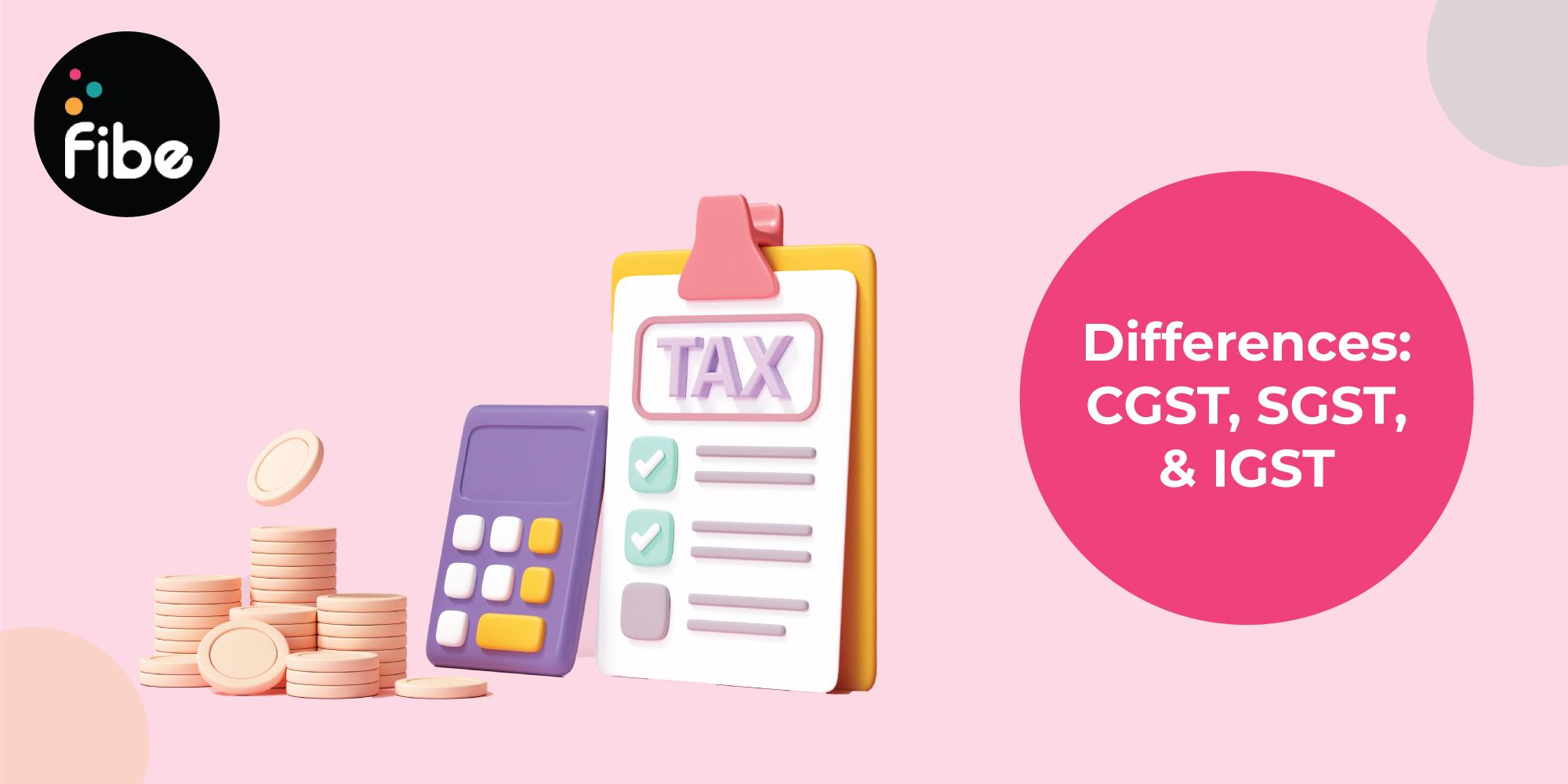Difference Between CGST and SGST and IGST: All You Need To Know
Reviewed by: Fibe Research Team
- Updated on: 28 Dec 2023
Reviewed by: Fibe Research Team

It is crucial to know the difference between CGST and SGST, and IGST to file accurate returns. To further the ‘One Nation, One Tax’ policy, the Government of India introduced a new indirect tax regime called the GST in 2017. These three categories of GST simplify interstate and intrastate transactions.
To learn what is IGST, CGST and SGST and the differences between them, read on.
Integrated Goods and Services Tax, or IGST for short, applies to the supply of goods and services across two or more states and their import and export in and out of India. The Central Government collects and distributes these taxes among the centre and the states.
For instance, if a trader from Telangana sells a good worth ₹2 lakhs to a customer from West Bengal, Integrated GST will apply. Supposing the applicable IGST rate is 18%, the buyer must pay ₹36,000.
CGST and SGST full forms are Central Goods and Services Tax and State Goods and Services Tax. The Central Government has the authority to levy and collect CGST on the intrastate supply of goods and services. So, what is SGST?
A similar rate of SGST applies to intrastate supplies, which the concerned state government governs. The Central Government introduced it to merge previous state-level taxes, like the value-added tax, entertainment tax, luxury tax, entry tax and so on.
In other words, Central and State Governments combine their levies and agree on equal revenue-sharing. So, if a trader from Gujarat sells a good within the same state, both CGST and SGST will apply. According to the GST Act, the CGST and SGST rates on intrastate supplies cannot exceed 14%, i.e., the combined rate cannot be more than 28%.
Also Read: What is GST?
Now that you know what is CGST, SGST and IGST, you must understand the things that set each of them apart. Check the following table to know the difference between CGST and SGST, along with IGST.
| Basis | IGST | CGST | SGST |
|---|---|---|---|
| Applicability | Inter-state supply of goods and services | Intrastate supply of goods and services | Intrastate supply of goods and services |
| Collecting Authority | Central Government | Central Government | State Governments |
| Revenue Distribution | Between Central and State Government | Central Government | State Governments |
| Input Tax Credit Adjustment | You can use Input Tax Credit (ITC) either on IGST, CGST, or SGST | You can use ITC either on IGST or CGST | You can use ITC either on IGST or SGST |
Now that you know the key points of IGST vs CGST vs SGST, it is crucial to know that GST applies only to businesses with a turnover of more than ₹10 lakhs. To fund your small business requirements and reach up to that turnover, you can get a Fibe Personal Loan of up to ₹5 lakhs at pocket-friendly rates starting at just 2% per month.
You can also borrow multiple times upon complete repayment of your existing loan, that too without any hassles and simple documentation requirements. Download the Fibe Personal Loan App or register on the website to start the application process!
India is a Union of States with a federal setup with the centre and the states having distinct functions to perform. The Constitution of India provides both the centre and the states the authority to levy taxes to raise revenues for them. The split of GST into CGST, SGST and IGST allows the Indian Government to collect indirect taxes under the ‘One Nation, One Tax’ policy with the dual taxation system.
The Central Government collects Integrated Goods and Services Tax (IGST) and distributes it among the centres and states under the GST Act of 2017.
To adjust IGST, CGST and STGST, you need to set off the IGST liability first. You can then set off CGST or SGST from the balance. You can set off either of these first, as there is no difference between CGST and SGST rates.
The GST Act of 2017 divides rates into four slab rates, i.e., 0% (nil-rated), 5%, 12%, 18% and 28%. CGST, SGST and IGST rates correspond to these rates only. For instance, if the GST rate applicable to the supply of a good or service is 12%, the CGST and SGST rates will be 6% each and the IGST rate will be 12%.